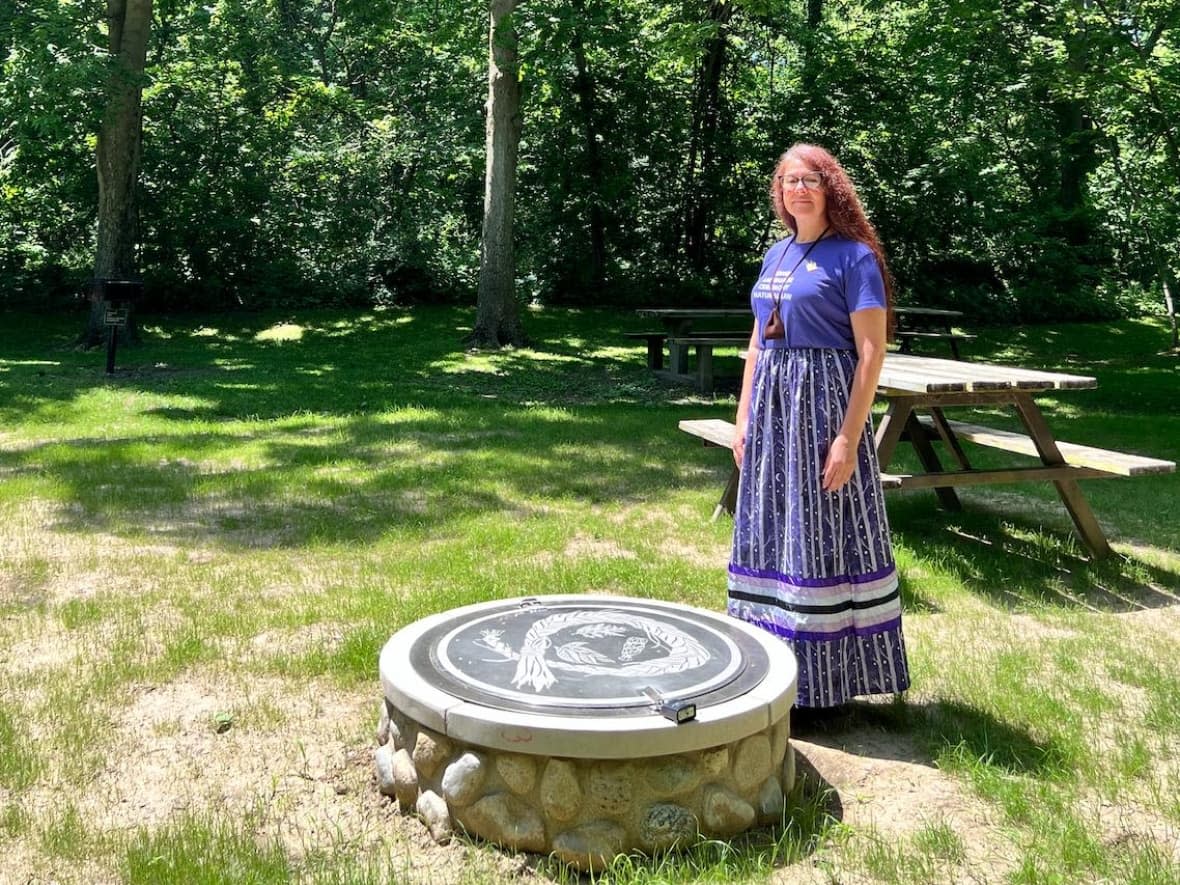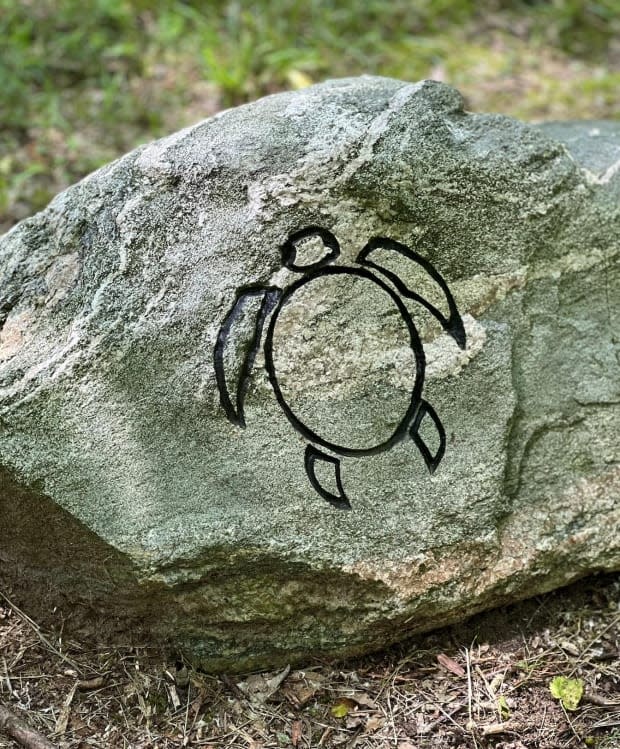Caldwell First Nation's relationship with Point Pelee National Park 'true to the Anishinaabek way of life'

Caldwell First Nation continues to collaborate with Point Pelee National Park to strengthen their culture on land that was once cared for by their ancestors.
An Indigenous gravesite in the park is now marked with decorated stones, and the park's visitors centre features an exhibit highlighting Caldwell's artifacts and history.
As well, a former parking lot that has been converted into a green space and has been renamed "Madbin Jina." It's being used for full moon ceremonies. Madbin Jina means "sit a while" in Anishinaabemowin.
"It's a really nice step forward. These [small changes] are healing for us," said Carrie Ann Peters, Caldwell First Nation's Language and Culture Coordinator.

"Even now, to be able to have that space where we know we're welcome and we can come. We don't have to ask permission and we don't have to be afraid. And, to be able to do that on this land where we know our ancestors could do those [same] things," Peters said.
Caldwell First Nation recently secured reserve land it lost 230-years ago, just north of Point Pelee National Park.
In November, 2020, the First Nation took possession of an 80-hectare property at Bevel Line Road and Seacliff Drive in Leamington, Ont. It had obtained the land a decade earlier in a claim settlement.
LISTEN | Caldwell First Nation's Carrie Ann Peters explain the importance of their relationship with Point Pelee National Park
Point Pelee would historically have been part of the Nation, but due to its status as a national park, was not a reserve option.
Peters says the community lost a lot of its cultural identity not having its own territory for so long, and is today working to reclaim it. She says the relationship that's been built with Parks Canada is important and true to the Anishinaabek way of life.
"As a National Park, it's protected. As an Anishnaabe, it's our responsibility to take care of the land, the trees, the water, the animals - and that's what Point Pelee does," Peters said.
"Point Pelee and Caldwell have such a great relationship that our access to the park to do special events, ceremonies, teachings…they are welcoming to us so we are able to use the park quite often."
Ask questions
Peters says many people she speaks to in Windsor-Essex are surprised to hear there is a First Nation in the Leamington area, and she hopes the displays at Point Pelee will help get the word out.
"Reach out to us, ask us questions. It's good that now people are starting to realize that, 'Oh wow, there is a First Nation here.' Just because we don't have a reserve doesn't mean we aren't here. We've always been here."


